Cerebellar – Ataxia is often caused by aplasia of the brain structures. This disease is congenital and can occur both against the background of hereditary genetic predisposition, and from developmental disorders in the intrauterine period. Typically, sick kittens are born when the mother is ill with panleukopenia. Also craniocerebral trauma, inflammatory processes and cerebral edema can cause damage to the cerebellum and the subsequent development of ataxia.
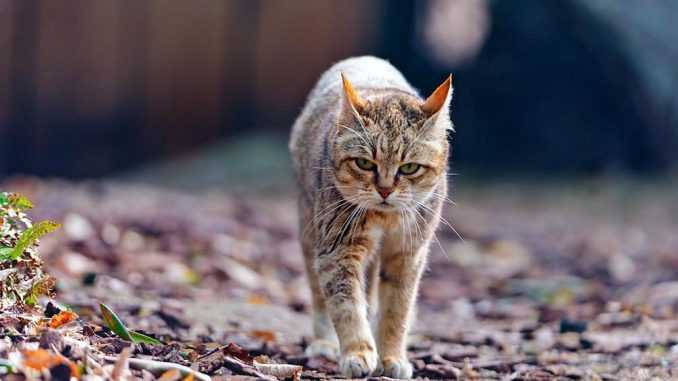
- Diseases of the musculoskeletal system
- Traumas of the brain and spinal cord
- Why does my cat walk like a drunk?
- Symptoms of vestibular disease in cats
- Try to pay attention to the following signs.
- Symptoms
- Diagnosis
- Laboratory methods of diagnosis
- Treatment
- First aid
- Main treatment
- Symptomatology and diagnosis
- Basic information about treatment
- Treatment as an outpatient and at home
- Prevention of ataxia
- Diagnosis of possible diseases
- Therapy
- Diagnosis of possible diseases
- Therapy
Diseases of the musculoskeletal system
Wobbly gait in a cat is a serious symptom that may indicate a host of all kinds of diseases. Problems with movement coordination or ataxia have no direct effect on the pet's mental characteristics. At the same time, the cat is not able to live its life to the fullest.
It is difficult for the animal to jump, climb on higher surfaces (e.g., a couch, or it is difficult to go to the litter box). Leaning toward the food bowl also makes the animal uncomfortable. Some of the factors that affect the gait changes in cats are musculoskeletal problems. The main ones, most commonly diagnosed in veterinary practice, are:
- Osteoarthritis and arthritis . Osteoarthritis is a pathological process that is not accompanied by pronounced inflammation and the development of pathogenic microflora in the joints. Osteoarthritis is a chronic disease. At the same time, arthritis is characterized by severe joint pain accompanied by purulent inflammation. With the long-term course of arthritis in the cat, there is a gradual destruction of bone and articular surfaces. Factors provoking the development of arthritis and arthritis in pets are genetic predisposition (especially in synthetic cat breeds), injuries from falls from height, metabolic disorders, sprains, poor diet, provoking the gradual thinning of the tissue structures that form the joint.
- Hernias and discopathies. A wobbly gait and rolling to the side when walking may indicate a herniated disc in the spine or a discopathy. As a rule, these musculoskeletal disorders affect cats of large breeds. The affected spine restricts all movements of the animal.
- Osteodystrophies. Pathologies, the cause of which is primarily a disorder of the calcium-phosphorus metabolism and disorders of vitamin metabolism in the body. Bones are affected in the form of softening and subsequent deformation, replacement by fibrous tissue elements of bone structures. Osteodystrophy can be caused by rickets, which develops in cats as a result of vitamin D deficiency.
Traumas of the brain and spinal cord
A shaky gait in a cat may be evidence of serious injury to the head or back.
Injuries to the spinal cord are life-threatening for the animal, just as cranial injuries are life-threatening.
Veterinary experts testify to the sad statistics among cats with spinal cord injuries. The animal is most often left with a disability or dies immediately or after treatment.
Owners of cats that have jumped off balconies or out of windows often go to veterinary hospitals. Injuries, sometimes incompatible with life, can occur when an animal collides with a stronger adversary – a dog. Damage to the spine is not uncommon, and when a powerful entrance door squeezes hard.
Why does my cat walk like a drunk?
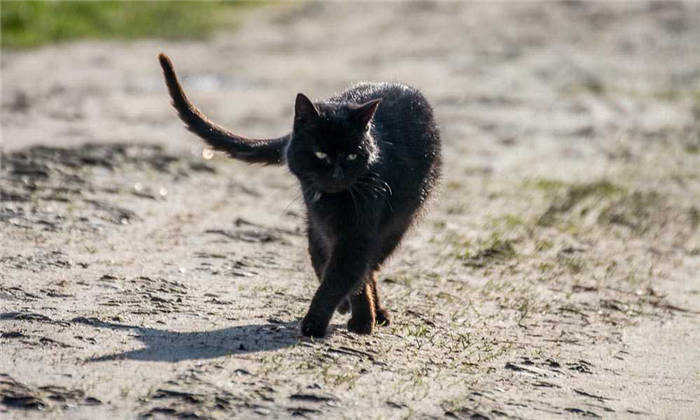
When a cat staggers when walking and loses coordination, there is usually one main reason: vestibular disease This is a type of ataxia that affects the vestibular apparatus located in the inner ear.
The vestibular apparatus sends information to the balance center in the brain, informing your cat when his head is moving and in what direction the movement is occurring. Unfortunately, this process will not work properly if your feline friend suffers from vestibular disorder. This makes your cat feel unsteady and causes the "drunken" gait that they so suddenly exhibit.
Several health conditions can be behind the occurrence of vestibular disorder, but most often the cause is undetectable without thorough testing. Unfortunately, this can take a long time and cost a lot of money, so many cases are considered idiopathic (without known triggers).
Although this sounds scary, once diagnosed, the disease is usually treatable, whether the underlying cause is found or not.
It's also worth noting that idiopathic vestibular syndrome cannot be passed on to any other pets you have. As long as you monitor the symptoms and follow your veterinarian's advice, your kitten should return to her normal vigorous state within a few weeks.
Symptoms of vestibular disease in cats
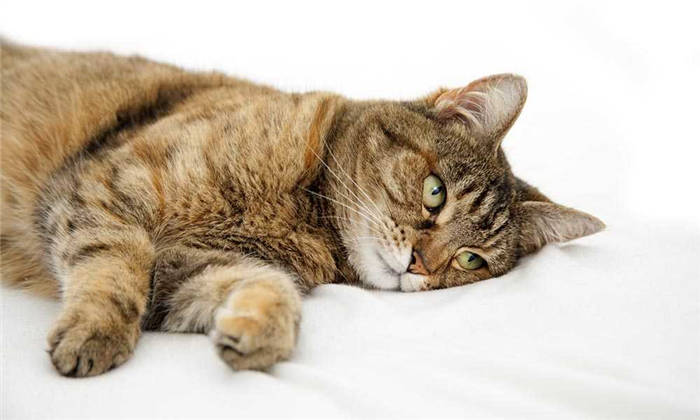
If you notice a sudden loss of balance in your cat, you should look for other symptoms that may indicate vestibular disease. The more information you can gather about your furry friend's condition, the better your veterinarian can understand and treat the cause.
Try to pay attention to the following signs.
- Standing problems
- The cat may stumble or fall while walking
- Head visibly tilted to one side
- Weakness
- Hearing problems
- Vomiting and/or decreased appetite
- Rolling on the floor
- Moving around in circles
- Repetitive eye movements
The nature of this condition also means that there is a high probability that your cat will hurt himself. A cat suddenly limping on its hind leg is abnormal and suggests that it may have injured itself by falling on a hard surface. Even if your cat doesn't voice pain, it's important to check for these injuries: cats have learned to hide their pain because it shows predators that they are vulnerable.
Symptoms
Although the symptoms of all types of ataxia are similar, there are different signs that depend on the cause of the disease.
When the spinal cord is affected, walking pains join, and the animal tries to move less. Very often there is no head coordination disorder.
Cerebellar ataxia is characterized by tremors during movement – when walking or running, the animal's body shakes finely, often only the back part. There may also be nystagmus – rapid eye movements independent of where the cat is looking or what it is watching.
If the vestibular apparatus is affected, nystagmus may occur, as well as severe pain in the head (the cat meows, sits in the corner with its forehead pressed against the wall).
Diagnosis
One of the first methods of diagnosis will be a careful collection of the anamnesis. It is important to know about previous injuries, infectious diseases and the cat's diet. If possible, family heredity and the peculiarities of pregnancy in the mother cat are found out.
The animal is examined by a neurologist to evaluate the functionality and abnormalities of the nervous system.
Serological reactions to dangerous feline viruses – immunodeficiency virus, panleukopenia and leukemia – are determined.
If the clinic has the opportunity, MRI diagnosis of the brain is performed, it clearly shows tumors, aplasia areas, hemorrhages and edema. Ultrasound and X-rays are also possible.
If an infection of the brain or spinal cord is suspected, cerebrospinal fluid is taken for white blood cell and protein analysis, and bacteriological testing is also done.
Laboratory methods of diagnosis
Diagnosis begins with the collection of history and external examination of the cat. All past and current diseases, inflammatory processes should be recorded. It is found out what the pet eats, hereditary diseases. The degree of impairment (if there are symptoms characteristic of ataxia) of the nervous system is evaluated. Laboratory tests are performed to detect leukemia, panleukopenia, or immunodeficiency virus.
An MRI scan of the brain may be ordered, which clearly visualizes neoplasms, edema, hemorrhages, and aplasia. X-rays and ultrasounds may also be taken. The cat's ears are examined with an otoscope. If infection of the brain or spinal cord is suspected, the cerebrospinal fluid is taken for analysis and a bacteriological examination is done.
Treatment
Ataxia can only be treated with medication. However, only a veterinarian can identify the cause of the disease. Additionally, a special diet is prescribed. If ataxia is secondary and provoked by other pathologies, they are treated first. In extreme cases, surgery is performed.
First aid
The first aid for ataxia is to go to the veterinarian. For proper treatment, it is necessary to establish the cause of the disease. If the cat has a pathology congenital, the doctor will prescribe medication, with the help of which you can stop the symptoms. Veterinarians advise providing the pet with proper care. This reduces the risk of symptoms and complications.
Main treatment
The main treatment for ataxia is medication. The tactic depends on the cause that caused the pathology. Additionally, methods of physical therapy, massage, and surgery may be used. The treatment regimen includes vitamins B and B12. To strengthen the immune system, "Gamavit" is prescribed. Prozerin" helps to restore nerve conduction.
Cerebellar ataxia is difficult to treat because of degeneration of the brain. Cerebrolysin" is prescribed to improve tissue regeneration and blood circulation. Glycine is prescribed to restore brain function. It is shown in courses of two weeks. Within 7 days, the cat should be given "Caviton" or "Piracetam". If the disease has affected the spinal cord, then physical therapy (UMI, UHF), massage, surgery is prescribed.
If the cause is an infection, the pet is given antibiotics ("Vancomycin", "Ampicillin"). To cope with intoxication helps infusion of saline solutions (IV) with glucose and glucocorticosteroids ("Prednisolone"). When the cause is hydrocephalus or swelling of the brain, diuretics Verosperon or Furosemide are prescribed.
To cope with a strong tremor in a cat helps "Diazepam". The drug is given in small doses, as it is highly toxic to the liver. With cerebellar ataxia, the cat's condition stabilizes by one year. However, require more careful care than healthy pets.
Symptomatology and diagnosis
In general, the symptoms of ataxia in cats are simple. The pet looks like a drunkard, he is reeling, the cat can not walk normally, in severe cases he falls on his side with a rattling, just trying to sit down. A constant tilting of the head to one side is very typical, as well as disorderly circular eye movements. Other symptoms may change depending on the underlying cause of the ataxia. For example, a cat "under the peppermint" may walk at a wobbly gait with its head held high, wiggling it from time to time and splashing saliva around generously. It looks awful, but it passes quickly.
Your veterinarian will perform a complete physical examination of the cat. The information that the cat's owner will give him is important. It is advisable to recall the following:
- Whether the pet has had access to household chemicals, poisons, or whether your home or neighborhood has been deratized (exterminated by rodents).
- Does your pet's family tree show any pathologies that the cat's parents suffered from?
- Has the cat ever fallen off a balcony, been hit by a bicycle, etc.
It is very important to remember all the illnesses your pet has had. It is desirable to tell if you did not try to treat it yourself by "prescribing" any medical preparations.
Blood tests are very important to find out if there is a lack of some important micro- and macronutrients and vitamins. X-rays and ultrasounds are also used to detect tumors, parasites and other serious problems.
Basic information about treatment
Be that as it may, the treatment of ataxia in cats depends strictly on the causes that caused the pathological changes in the behavior of the animal. In the case of poisoning. It is important to determine what exactly the animal was poisoned with. In all cases, activated charcoal is prescribed, which partially absorbs the toxin, intravenous administration of supporting compositions is practiced.
If the reasons for the somewhat inadequate behavior of the cat are A "dose" of catnip or valerianA dose of catnip or valerian is not worth worrying about: the effects will wear off after a few minutes and the cat will be back to normal.
In the case of head injuries or even a suspicion of it, you should take your cat to the vet immediately. He will assess the animal's condition. If the brain has been damaged, there is a high probability of death, or the animal turning into a "vegetable". In this case, euthanasia is recommended. In other cases, urgent surgery can save the cat. Similarly, in cases of back injuries that can somehow threaten the integrity of the spinal cord.
Thiamine deficiency.This can be detected by a blood chemistry test and can be corrected by a balanced diet and elimination of thiaminase-containing products. In severe cases, injections of vitamin B1 and administration of oral multivitamins may be necessary.
Brain hypoplasia. There is no treatment for this pathology, but in some cases the disease does not progress and the cat can live with it. Quality of life, however, is "shaky" in all respects, but it is all quite acceptable. By the way, such a cat with ataxia can have offspring, and the health of the kittens will be normal (but only if the pathology is not hereditary).
Lysosomal disease. As we have already said, there is no treatment, the prognosis is unfavorable. In some cases, the condition of the animal for a relatively long time can be maintained by diet, but eventually all ends with the death of the cat.
Treatment as an outpatient and at home
It is important that the therapy is carried out comprehensively. The treatment regimen is developed depending on the cause that caused the development of the disease. In this regard, the dosage of drugs may differ even if we are talking about the same form of pathology.
- Vitamin complexes, B vitamins;
- for the elimination of infections – antibiotics;
- for swelling of the brain – diuretics;
- Hepatogect for liver dysfunction;
- to improve cerebral blood circulation – Cerebrolyzate;
- saline solutions in drips to relieve intoxication.
Physiotherapy and massage are recommended for the animal. If the spinal cord is affected, surgical intervention is definitely required.
Important! Do not try to treat yourself. A sick animal requires professional advice from a veterinarian. The severe form can not be eliminated only by folk methods without a comprehensive approach.

Prevention of ataxia
Despite the complexity and severity of the pathology, pet owners can create the necessary conditions to avoid its development. First of all, it is necessary to avoid any factors that may lead to injury. It is not advisable to let the pet go outside unattended.
Preventive measures for the development of ataxia should include:
- Contacting the veterinarian in a timely manner if a pet is suspected of having a head injury.
- Vaccinations according to the schedule against leukemia, panleukopenia.
- Treat inflammation in the ear canals on a mandatory basis.
- Examine the cat for panleukopenia before mating is planned.
- During pregnancy, protect the cat from contact with other animals.
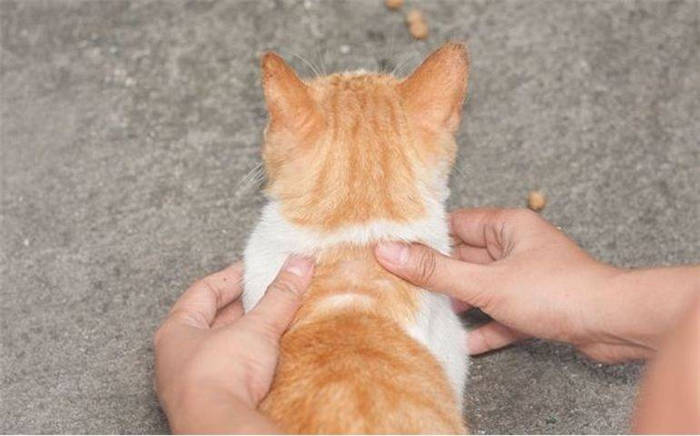
Important! Coordination disorder can be cured effectively with therapeutic exercise. Veterinarians recommend exercising with the pet, provoking it to play. Activity is very necessary for a kitten with ataxia.
Ataxia in cats is a complex disease, but with a competent and timely approach by the owner of the pet, it is possible to return it to normal life. Care, compliance with preventive measures effectively affects the recovery process.
Diagnosis of possible diseases

When visiting the veterinarian, a number of tests are prescribed to identify the underlying cause. Initially, the specialist collects the anamnesis – information about possible mechanical injuries in the skull area, diseases of infectious type, suffered by the animal is important.
Information concerning the cat's diet is useful for making a diagnosis. There may be a hereditary factor. To evaluate disorders of the nervous system and evaluate functional characteristics, the cat should be examined by a neurologist.
A clinical cat serology test is mandatory, to detect immunodeficiency virus, leukemia or panleukopenia. Some veterinary clinics perform magnetic resonance imaging. The results of the study allow them to assess the possibility of tumors, aplasia, and brain hemorrhages. Ultrasound and radiographic diagnostics may be prescribed.
A clinical examination with a special device is performed. If the doctor suspects an infection localized in the area of the spinal cord or brain, the spinal fluid is collected and further investigation and culture on nutrient media is carried out. Depending on the reasons that have provoked the cat's wobbly gait, an individual treatment tactic is developed.
Therapy
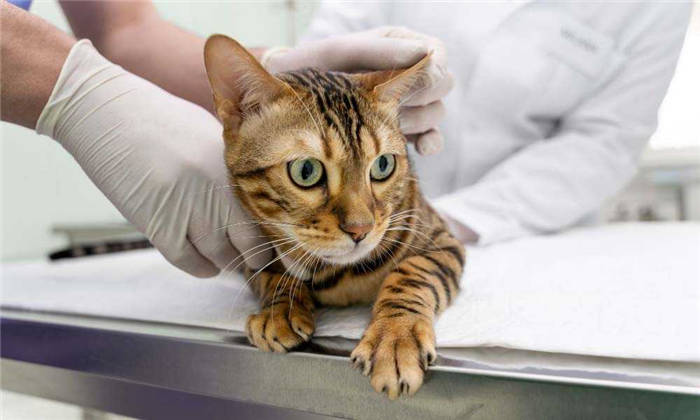
After identifying the cause that caused the appearance of the characteristic signs of ataxia, the doctor prescribes therapy, including vitamin preparations of the B group. A good therapeutic effect is achieved with the use of vitamin B12. To strengthen the overall resistance of the body, immunomodulatory drugs are prescribed.
Restoration of nerve conduction is carried out with the appointment of various neurological drugs . Substances are good at crossing the blood-brain barrier.
Therapy for diagnosed cerebellar ataxia is prolonged and does not always give positive results. The basis of the disease lies in processes of a degenerative type in the brain. Improvement of blood circulation in the brain tissues is carried out with the help of various drugs, the name and dosage of which is determined by the veterinarian.
With lesions in the area of the spinal cord, surgical intervention is carried out. Physiotherapeutic treatment, massages and pulse therapy are used. The presence of inflammatory processes provoked by infection is stopped by antibiotics. Anti-inflammatory glucocorticosteroid drugs are administered. To prevent the development of intoxication in the body, drips of saline solutions and glucose are prescribed. Diagnosed cerebral edema requires immediate administration of diuretics .
If the animal suffers from severe tremors in the body during movements, therapy is given to relieve this condition. Individual doses of anticonvulsants are administered. Monitoring of hepatic structures is mandatory to avoid intoxication.
It is proven that kittens born with cerebellar ataxia, when they reach 12 months of age, appear to be completely cured. In fact, they just have a decreased manifestation of the pathology. Such cats need to be given their maximum time, creating a safe space.
Diagnosis of possible diseases
When visiting the veterinarian, a number of tests are prescribed to identify the underlying cause. Initially, the specialist collects the anamnesis – information about possible mechanical injuries in the skull area, diseases of infectious type, suffered by the animal is important.
Information concerning the cat's diet is useful for making a diagnosis. There may be a hereditary factor. A neurologist will examine the cat to evaluate nervous system disorders and evaluate functional features.
Clinical cat serology tests are mandatory, to detect immunodeficiency virus, leukemia or panleukopenia. Some veterinary clinics perform magnetic resonance imaging. The results of the study allow them to assess the possibility of tumors, aplasia, and brain hemorrhages. Ultrasound and radiographic diagnostics may be prescribed.
A clinical examination with a special device is performed. If the doctor suspects an infection localized in the area of the spinal cord or brain, a spinal fluid sample is taken and further investigation with culture on nutrient media is carried out. Depending on the causes of the cat's wobbly gait, an individual treatment tactic is developed.
Therapy
Having identified the cause, which caused the emergence of characteristic signs of ataxia, the doctor prescribes therapy, including vitamin preparations of the B group. A good therapeutic effect is achieved with vitamin B12. Immunomodulatory drugs are prescribed to strengthen the general resistance of the body.
Restoration of nerve conduction is achieved by prescribing various neurological drugs . Substances are good at crossing the blood-brain barrier.
Therapy for diagnosed cerebellar ataxia is long and does not always yield positive results. The basis of the disease lies in degenerative processes in the brain. Improvement of blood circulation in the brain tissues is carried out with the help of various drugs, the name and dosage of which is determined by the veterinarian.
With lesions in the area of the spinal cord, surgical intervention is carried out. Physiotherapeutic treatment, massages and pulse therapy are used. The presence of inflammatory processes provoked by infection is treated with antibiotics. Anti-inflammatory glucocorticosteroid drugs are administered. To prevent the development of intoxication in the body, saline and glucose drips are administered. Diagnosed cerebral edema requires immediate administration of diuretics .
If the animal suffers from severe tremors in the body during movements, therapy is given to relieve this condition. Individual doses of anticonvulsants are administered. Obligatory control of the liver structures in order to avoid intoxication.
It has been proven that kittens born with cerebellar ataxia, when they reach 12 months of age, appear to be fully recovered. In fact, they just have a decreased manifestation of the pathology. Such cats need to be given their maximum time, creating a safe space.
In order to prevent the development of a wobbly gait, provoked by brain disorders, a number of rules should be followed. The main ones are:






